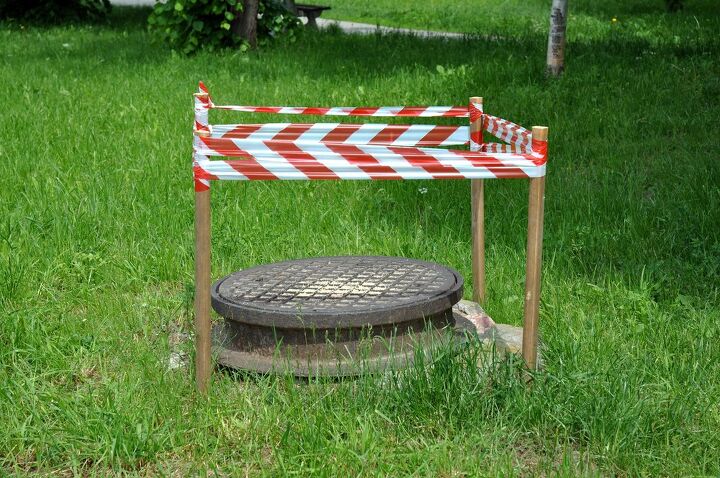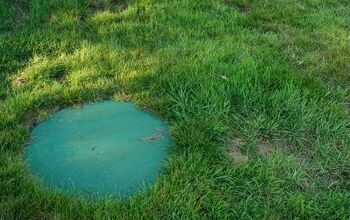How To Locate Septic Tank Field Lines (Quickly & Easily!)

Knowing how to locate your septic tank is essential for maintaining and taking care of your septic system. It’s also crucial that you know where your field lines just in case you need to dig for any of your projects. But how exactly do you locate your field lines?
To find your septic tank field lines, look for humps in the ground, where the dirt sets over them. You can also request a septic tank diagram of your drain field. However, if you still cannot find your septic tank drain lines, you can hire a professional to assist you.
There are many different reasons you may need to locate the field lines to your septic tank. In this guide, we will share a few methods you can execute to find your drain lines. That way, you won’t need to hire a professional right off the bat.
Do You Need a Septic Tank Cleaning or Pumping Service?
Get free, zero-commitment quotes from pro contractors near you.

Know How Your Septic Is Set Up
Before you begin, you need to know a little bit about how your septic system is set up so that you know where to look. Your septic system has a tank that holds the solid waste. Your liquid waste goes in through the leach field to drain.
You also have a baffle in the tank that helps separate these two types of waste. The liquid is then pushed into the ground through a drain line connected to pipes on a bed of gravel, where the liquids will be absorbed.
Locating Your Septic Tank Field Lines
Knowing where your field lines run is essential because you don’t want to lay concrete over them or plant any trees nearby. The best way to do this is by obtaining a diagram. This will show where your drain field is so that you know the area to avoid when digging or planting.
However, not everyone is that lucky to be able to obtain such a diagram. Therefore, we’ve compiled several methods for you to try so you can track down your field lines.
Locate Your Septic Tank
The easiest way to locate your septic tank is by starting at the septic lines coming from our house. You can follow the drain lines for your plumbing since they are connected to your septic tank. You can expect the tank to be set back about 10 or 20 feet away from the outside of your home.
On the other side of your tank, the drain lines will continue into your leach field. Look at the slope of your land so that you can locate where your leach field is. However, make sure you’re not blindly digging or using any heavy machinery to search for the pipes as these could break them.
If you are still having problems, you can always try to use a septic tank probe. You can stick the thin metal probe into your soil until you touch your tank. Once you find the tank, you will find the edges that will eventually lead you to the pipes.
Search For Natural Indicators
If you see a swampy or wet type of area that never seems to dry out, this can point to the location of your septic drain lines. Also, if there is any green striped vegetation or grass with brown grass surrounding it, this may be a sign that your lines are right below it.
Something else you can check is the lack of frost or snow in a particular area of your yard during the winter. Of course, this will only work if you’re in an area that experiences snow and frost. If you see any of these areas, this may also point to where your field lines run.
One more natural indicator you can look for is shallow depressions that are parallel to one another. This shallow depression usually happens in the drain field. However, if you have a deeper system, then you may not see these parallel depressions.
Look At Drawings Of Your System
You could contact your local health department to ask for drawings or blueprints of your septic system if the system was installed with a permit. All the details of the drain field should be found on the lateral lines diagram, and the layout, components, and the location.
However, if you don’t have any luck with this, you can always request a record search for your property. There should be a form called “Request Copy of Septic System Blueprints.” You can fill this out and then return it to your health department. If they do have the blueprints, they will mail them to you. If they don’t, then you will need to get a hold of the prior owner of your property.
Inspect The Distribution Box
Some, not all, septic tanks contain an extra distribution box that is on the downstream side, just a few feet away from the tank. This box will help the flow of water into the trenches through the pipes and the ports.
If you have an additional distribution box, the lid will tell you which direction the ports go. The direction the ports go point to your drain field lines. You can also find the distribution box using a probe. Make sure if you use a probe, you don’t press it into the box too hard so you don’t damage the box.
Know How Big Your Drain Field Is And Where To Look
Knowing the scope and the size of your drain field will help you to find it easier. The size of the drain field will also depend on how large your house is and the type of soil that your land contains.
If you know the layout of the lines, this will help you too. Most lines will exit near the intake. However, they may also travel perpendicular to the fork in an H-pattern or another type of pattern. They are typically at a minimum of 10 feet apart and less than 100 feet long.
Hire A Professional
Remember that you always have the option to hire a professional if you cannot locate your own field lines. If you’ve tried every method to no avail, then it’s time to call a licensed septic waste transporter or a contractor that specializes in disposal systems.
They will first locate your septic tank and then find your drain field lines. Since these are specialists in the field, they have all the right tools to use and knowledge of how to use them.
How Much Does It Cost To Hire A Professional?
The amount you pay will depend on who you hire. Regardless, you can expect to pay between $100 to $300 for a contractor to assist you in finding your field lines. The price depends on the complexity of your system and the amount of time that it takes.
However, not all contractors will charge a per hour fee to find your septic tank. Some of them will charge a $100 flat fee with a $10 service fee attached. So, when looking for a professional, it’s important that you shop around and call several different places.
When calling to find a contractor, make sure you ask them what they charge and what the price covers. That way, you know what to expect as far as your budget considerations go.
Mapping Your Septic System
Once you find the location of everything that you need, it may be a good idea to map your septic system so that you won’t need to go through this again.
Instructions
- Find your septic tank. Use a probe, but probe lightly to locate your septic tank. Once you find the tank, you will want to follow it to find the closest edge that’s to the house.
- Measure the distance to the house. Once you find the edge, measure how far the tank is from your home. Write this down. Take note of the exact location as well.
- Trace the edges of your septic tank. Using the probe, trace the edge of your tank and mark the corners with a few wooden stakes. Then, measure corner to corner to get the size of your tank.
- Find the drain lines. The drain lines are connected to the other side of your septic tank, opposite of your house. Locate the drain lines into the drain field and measure how many and how long they are.
- Draw your diagram. Now you’ll want a large piece of map paper and a pencil. Draw your property and mark the measurements of your house to your septic tank. You can also measure how far away a specific tree is if you want a secondary marker. As far as the mapping of the drain lines, this doesn’t need to be exact. Knowing the general area of your drain lines help for when you need to dig, as well as when you need them serviced. Therefore, approximate length and depth are sufficient.
Do You Need a Septic Tank Cleaning or Pumping Service?
Get free, zero-commitment quotes from pro contractors near you.

Wrapping It Up
There are many reasons why you may need to know where your septic field lines are, especially if your DIY project consists of digging or driving heavy machinery through your yard. To find your field lines, you can obtain a map of your septic system or find it yourself. If you find it yourself, then drawing a plan will save on the hassle for next time.
Related Guides

Heather is a passionate writer who loves anything DIY. Growing up, she learned everything from home repairs to design, and wants to share her tips with you. When she's not writing, she's usually hiking or searching for her next DIY project.
More by Heather Robbins











![10 Best Zero Turn Mowers – [2022 Reviews & Ultimate Buyer's Guide]](https://cdn-fastly.upgradedhome.com/media/2023/07/31/9070522/10-best-zero-turn-mowers-2022-reviews-ultimate-buyer-s-guide.jpg?size=350x220)











![How To Reset A Whirlpool Cabrio Washer [In 5 Easy Steps!]](https://cdn-fastly.upgradedhome.com/media/2023/07/31/9076531/how-to-reset-a-whirlpool-cabrio-washer-in-5-easy-steps.jpg?size=350x220)



